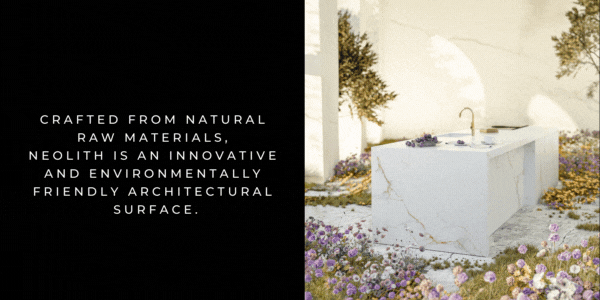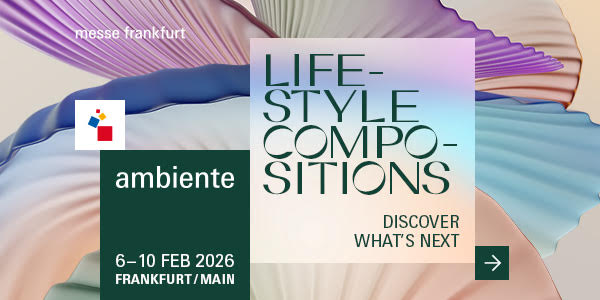A Conversation with Thabisa Mjo of Mash T Design
Thabisa Mjo, founder and creative director of Mash T Design Studio, is known for her innovative work that seamlessly blends heritage with forward-thinking design. Her ability to draw on South African craft traditions while engaging with global design languages has earned her widespread recognition, both locally and internationally. In her latest work, presented at 3daysofdesign, she explores the intersection of Art Deco aesthetics and futuristic storytelling, using cutting-edge materials like FENIX® and Formica®. We spoke with Thabisa about reinterpreting the past, designing for emotional resonance, and what it means to live in the future imagined by the past.
Back to the Future draws from Art Deco aesthetics—what inspired you to reinterpret this style through a futuristic lens?
The Art Deco era was defined by geometric shapes and patterns, luxurious materials, vertical lines, symmetry, and a bold embrace of modern technology. Designers and architects of that time were already creating through a futuristic lens—so it felt fitting for me to do the same, drawing on the same principles they applied in their work.
How did you approach combining historical design language with contemporary materials like FENIX® and Formica®?
The use of modern technology in design was a hallmark of the Art Deco era. Today, materials like FENIX® and Formica®—made possible through advanced technology—align perfectly with that design ethos. These contemporary materials are not only durable and sustainable, but also available in a wide range of colours, patterns, and finishes to suit diverse design needs.
What does the idea of “living in the future imagined by the past” mean to you personally as a designer?
It’s about fully engaging my imagination—linking creativity with value creation by seeing the familiar in new and unexpected ways.
Can you walk us through the symbolism behind the materials you chose—such as Jet Sequoia, Calacatta Marble, Nero Ingo, and Piombo Doha?
The use of Calacatta Marble and Jet Sequoia evokes the luxurious materials synonymous with the Art Deco era. Incorporating Piombo Doha highlights the importance of tactility—especially in a time when we’re rapidly advancing toward AI, automation, and machine-made everything. I believe it’s essential for design to retain the “human touch,” that tactile quality that engages all our senses.
How do you see the role of memory and nostalgia in modern design?
It’s a powerful tool for leveraging nostalgia to create work that resonates emotionally with the user or viewer. It also plays a valuable role in shaping cultural identity by drawing on shared experiences and collective memories.
What was it like collaborating on a brief that spans nearly a century of design evolution?
Super exciting—because it’s so interesting to draw parallels between what was and what currently is. It also provided space for my mind to wander into what is yet to come.
How does South African design culture influence your interpretation of global movements like Art Deco?
I believe my perspective as someone living in South Africa—with our own strong design ethos, yet access to global design, particularly from the Global North—inevitably shapes my interpretation of global movements. My take on these movements will always be fresh, precisely because it comes from a designer whose ethos isn’t rooted in the dominant global design narrative.
What conversations did you hope your piece sparked among visitors at 3daysofdesign?
That the more things change, the more they stay the same. I suppose I’ve been reflecting on how deeply integrated technology already is in our lives—how it makes things easier, yes, but also how it can impair the very thing that makes us human: connection. Human connection.
As a creative director, how do you balance function, form, and storytelling in your work?
I believe all of these considerations go hand in hand. I usually begin with the storytelling: What am I making? Why am I making it? Who is it for? Does it solve a problem—and for whom? How will it be made? These questions shape and guide the function, form, and narrative of the piece.
You might also like...
-
Up Close & Personal With Vinette Diab-Nicholls: Designing with Purpose and Power

In celebration of Women’s Month, we sat down with Vinette Diab-Nicholls, CEO of the award-winning Giava Interiors. A single mother of three and the creative ...
-
Nalu Villa, Glen Beach – A Quietly Luxurious Camps Bay Escape

Some homes announce themselves boldly; others, like Nalu Villa, whisper their presence into the landscape. Anchored into the linen-coloured sands of Glen Beach in Camps ...
-
Celebrating Women’s Month at Roche Bobois

August is Women’s Month in South Africa — a time to honour, celebrate, and elevate the women who inspire change, lead with passion, and shape ...
-
Celebrate Summer with Tinzeltown

Madonna was right, we’ve all been true blue for long enough. But now that the sun’s out and the skies are clear, blue ...



























